The charm of Hoi An Old Town
Hoi An
3 minutes
Feb 23, 2024
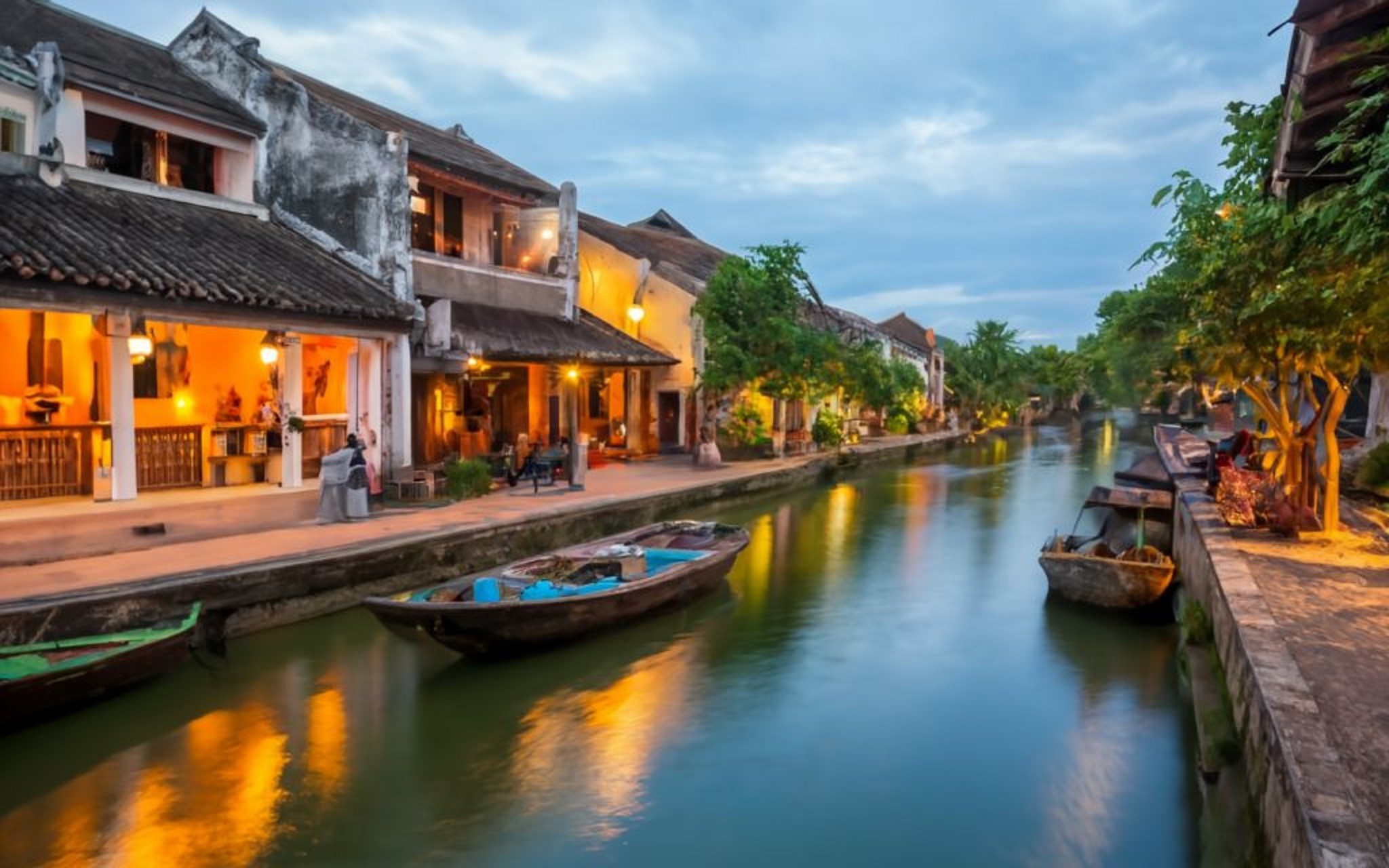
Hoi An, a city where life is peaceful, is a place that retains its old atmosphere despite the unstoppable passage of time. The old tile roofs covered in moss and the streets filled with the red light of red lanterns give the impression of time travel to a world hundreds of years ago. In this article, we will take a closer look at the characteristics and charms of Hoi An Old Town, also known as the Old Town.
Hoi An Old Town, located at the mouth of the Thu Bon River in Quang Nam Province, is a charming area that offers a glimpse into Vietnam's rich history. With its narrow alleys and traditional architecture, visiting Hoi An feels like stepping back in time to the thriving trading port of the Nguyen Dynasty.
A treasure trove of Vietnamese historical sites
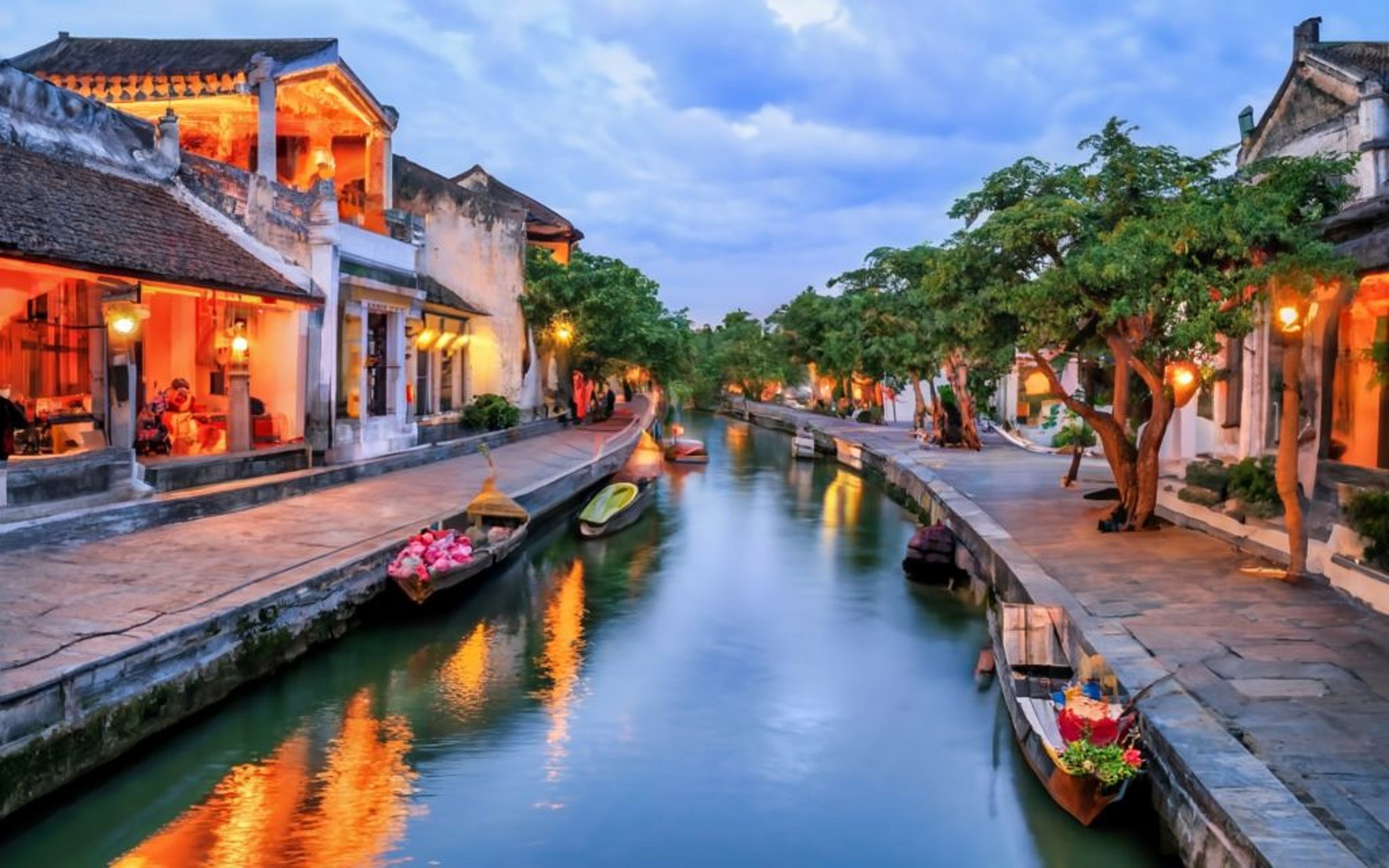
The town is home to a remarkable number of historical sites, including ancient houses, temples, churches, shrines, pavilions, and tombs. With over 1,360 historical sites and 1,068 ancient houses, Hoi An Old Town is a treasure trove of Vietnamese ruins that have been remarkably preserved.
Old temple in Hoi An
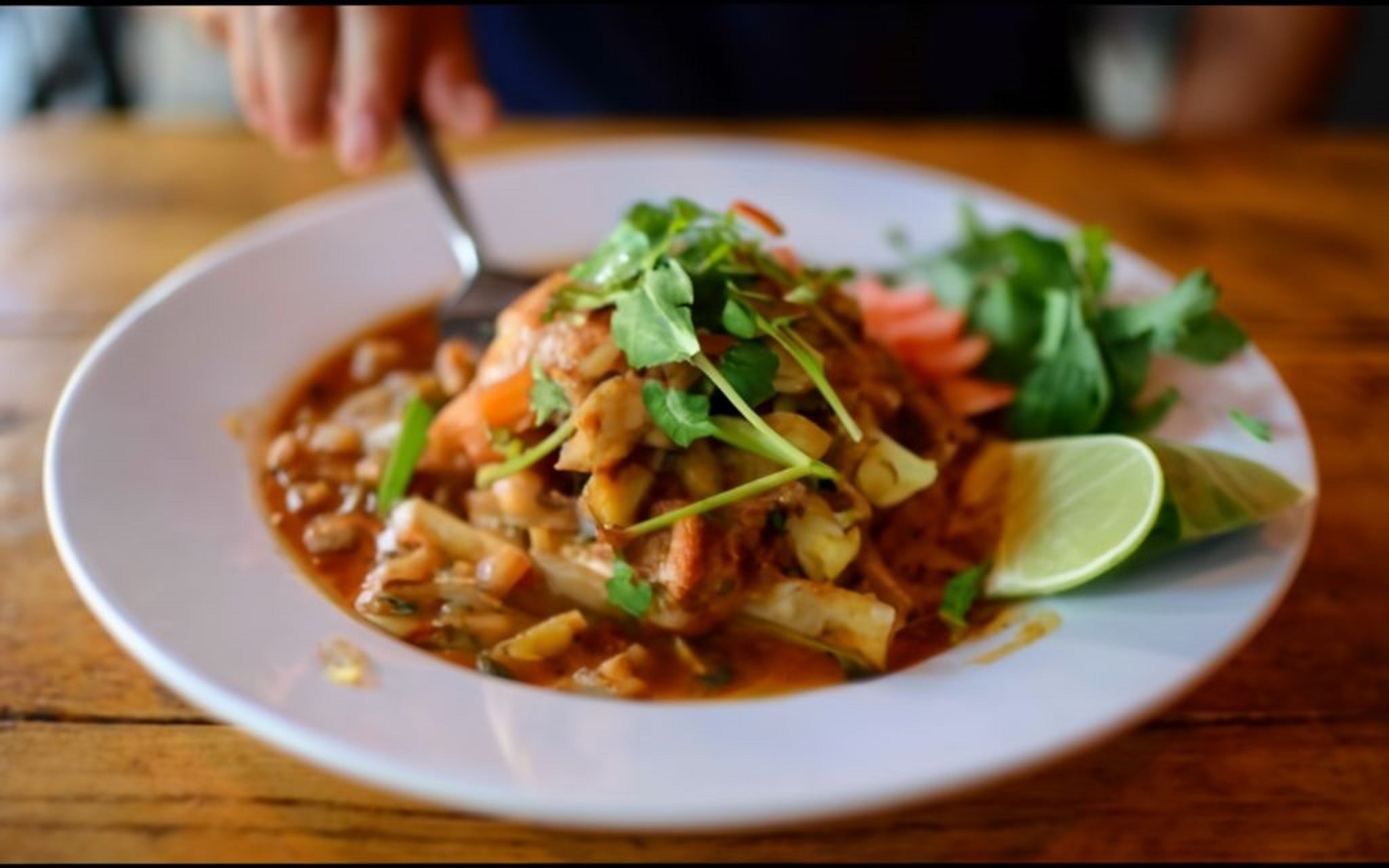
When it comes to food, Hoi An offers a variety of delicious dishes that capture the essence of the town's old-world charm. Some must-try dishes include Hoi Po chicken rice, Hoi An Cao Lau, Banh Xeo, and Banh Bao. These dishes may seem ordinary, but they offer a unique culinary experience that transports you to the old atmosphere of Hoi An.
Old temple in Hoi An
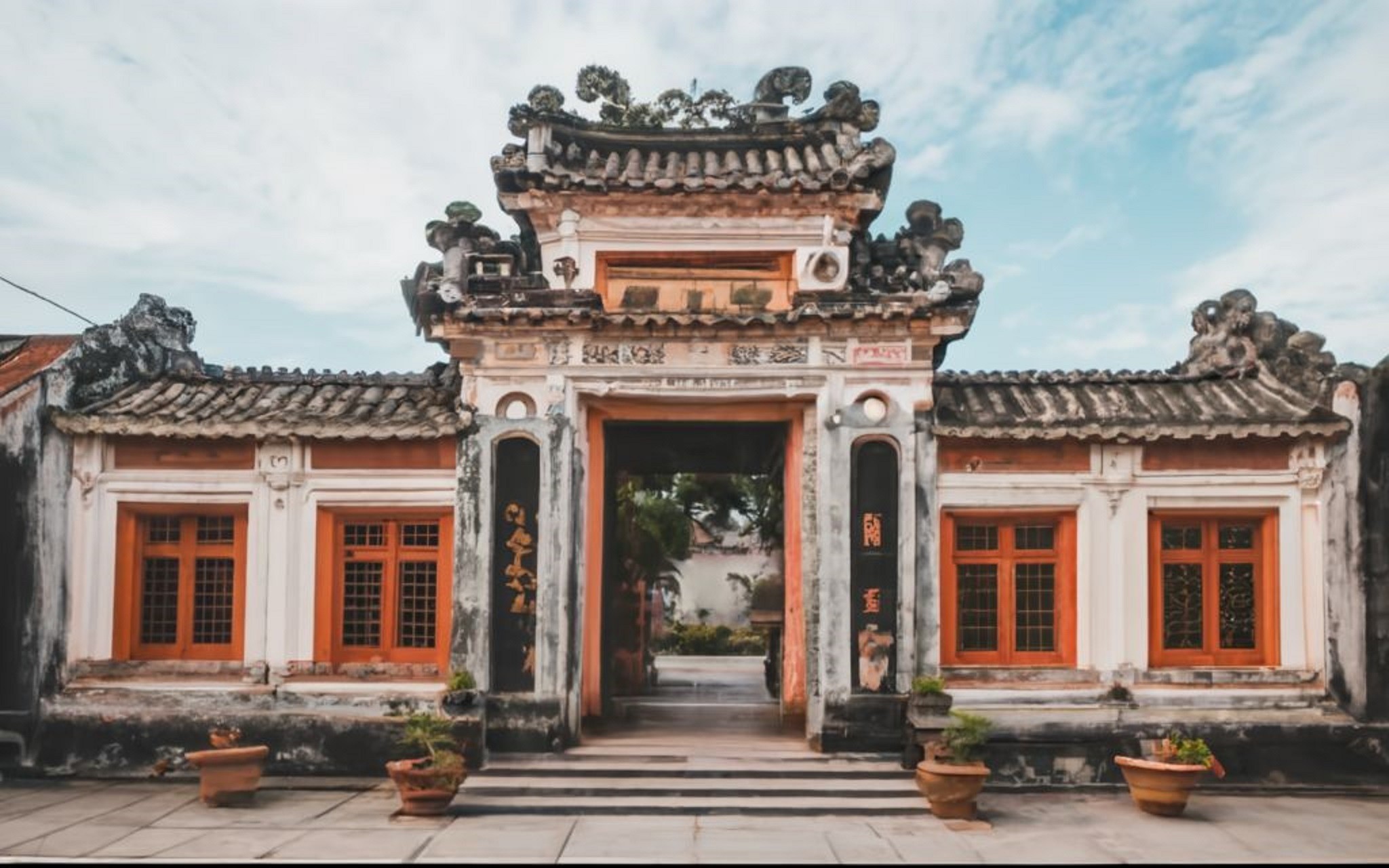
The temples in Hoi An Old Town are another highlight for visitors. Built between the 17th and 18th centuries, these temples were constructed to honor the sages who founded villages, associations, and communities. They showcase distinctive architectural styles, such as fire-resistant brick walls, yin and yang tiled roofs, and central hall altars. Notable temples include Chùa Bà, Chùa Ôn Temple, Chùa Chúc Thanh Temple, Chùa Phước Lâm, and Chùa Vạn Đức Temple. The Guan Gong Temple, in particular, serves as the religious center for Hoi An merchants and hosts the annual Ong Sa Festival.
Chùa Cầu, also known as the Japanese Covered Bridge, is a symbol of Hoi An Old Town. This unique bridge, which connects Tran Phu Street and Nguyễn Thị Minh Khai Street, showcases a blend of Japanese, Vietnamese, and Chinese architectural influences. It is worth noting that there is no Buddha statue inside the temple, but a wooden statue is enshrined in the main hall.
Chinese community center
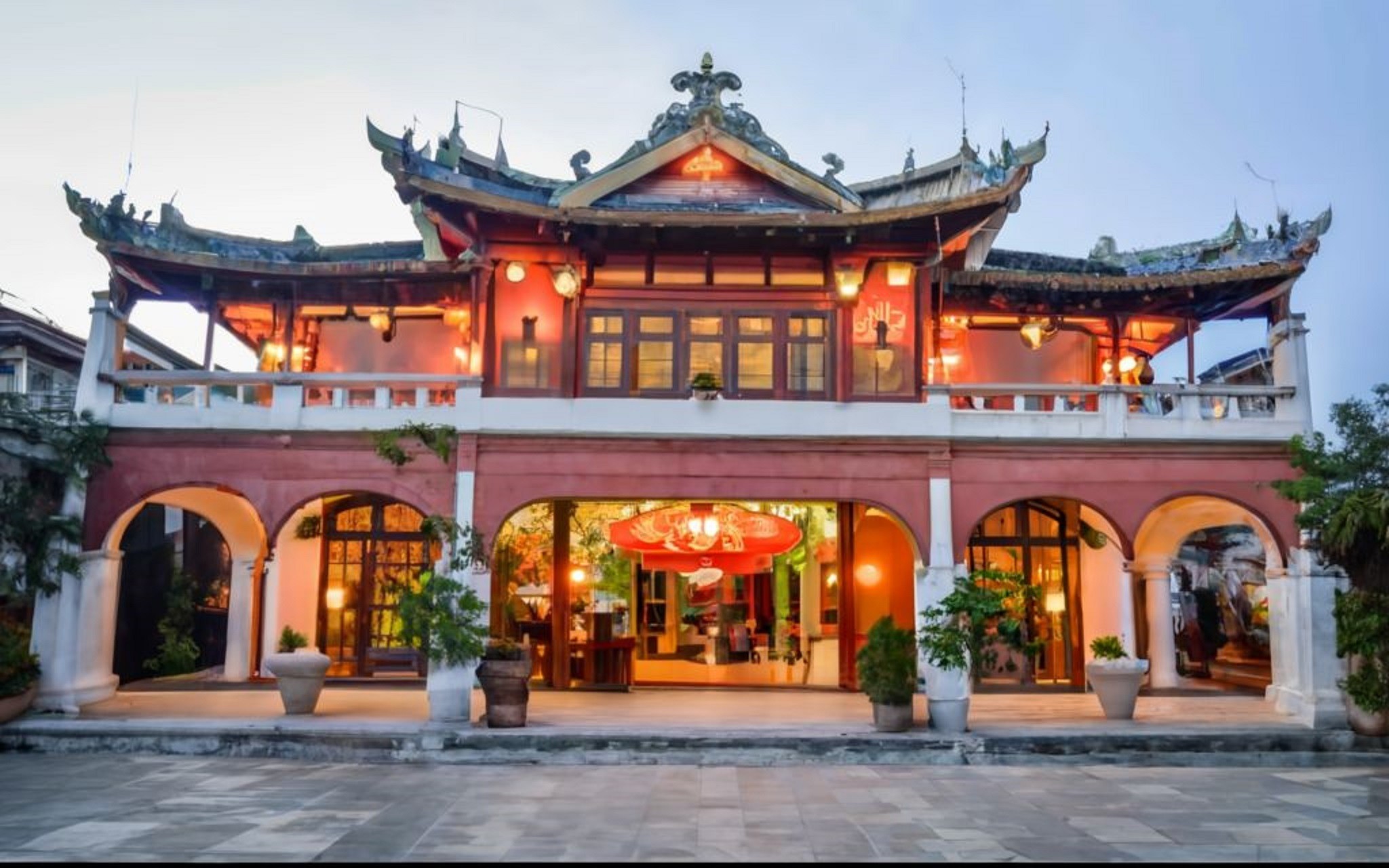
Tran Phu Street is a must-visit for those who want to explore the Chinese community centers in Hoi An. The China Hall, Guangdong Hall, Fujian Hall, Chaozhou Hall, and Qizhou Hall represent the different segments of the Chinese population residing in Hoi An. These halls are adorned with intricate decorations, red and gold painted wood, and striking sculptures, offering a glimpse into the communal living spaces and cultural heritage of the Chinese community.
Hoi An Traditional Festival
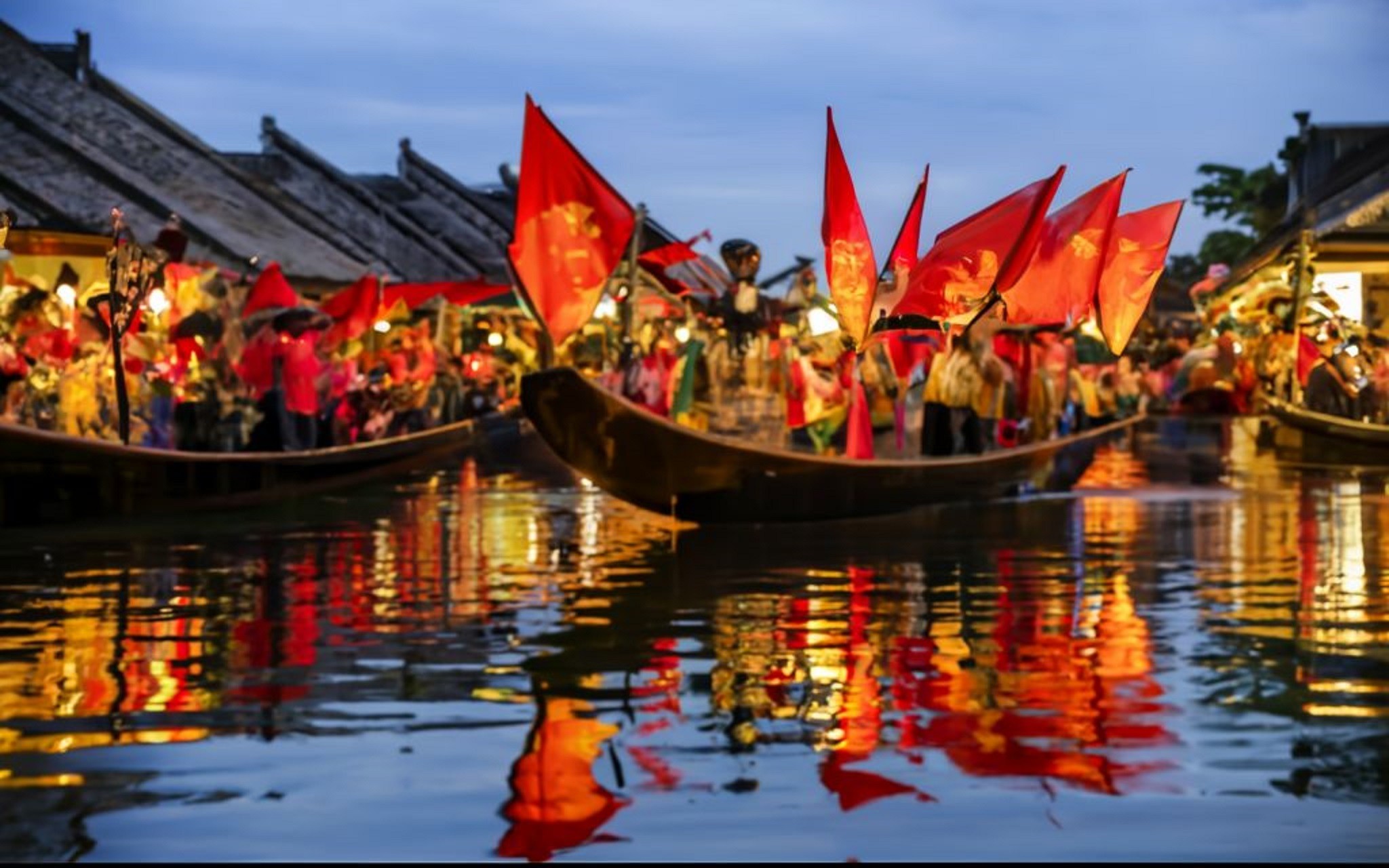
Hoi An is also known for its traditional festivals, which showcase the harmonious blend of cultures from around the world. These festivals honor village deities, ancestors of specific professions, and saints or religious beliefs. The Old Town Full Moon Night Festival, held on the 14th night of the lunar month, is a particularly enchanting event. The town is illuminated with lanterns and electric lights, creating a magical atmosphere that evokes a sense of nostalgia. Visitors can enjoy traditional Vietnamese games and participate in the floating lantern ceremony on the river.
Hoi An during the festival is a sight to behold, with colorful lanterns and the sound of songs filling the air. This enchanting event is often referred to as the Hoi An Lantern Festival and offers a unique and romantic experience that captures the essence of the town's charm.
Table of contents
The charm of Hoi An Old Town
Hoi An
3 minutes
Feb 23, 2024

Hoi An, a city where life is peaceful, is a place that retains its old atmosphere despite the unstoppable passage of time. The old tile roofs covered in moss and the streets filled with the red light of red lanterns give the impression of time travel to a world hundreds of years ago. In this article, we will take a closer look at the characteristics and charms of Hoi An Old Town, also known as the Old Town.
Hoi An Old Town, located at the mouth of the Thu Bon River in Quang Nam Province, is a charming area that offers a glimpse into Vietnam's rich history. With its narrow alleys and traditional architecture, visiting Hoi An feels like stepping back in time to the thriving trading port of the Nguyen Dynasty.
A treasure trove of Vietnamese historical sites

The town is home to a remarkable number of historical sites, including ancient houses, temples, churches, shrines, pavilions, and tombs. With over 1,360 historical sites and 1,068 ancient houses, Hoi An Old Town is a treasure trove of Vietnamese ruins that have been remarkably preserved.
Must eat food in Hoi An

When it comes to food, Hoi An offers a variety of delicious dishes that capture the essence of the town's old-world charm. Some must-try dishes include Hoi Po chicken rice, Hoi An Cao Lau, Banh Xeo, and Banh Bao. These dishes may seem ordinary, but they offer a unique culinary experience that transports you to the old atmosphere of Hoi An.
Old temple in Hoi An

The temples in Hoi An Old Town are another highlight for visitors. Built between the 17th and 18th centuries, these temples were constructed to honor the sages who founded villages, associations, and communities. They showcase distinctive architectural styles, such as fire-resistant brick walls, yin and yang tiled roofs, and central hall altars. Notable temples include Chùa Bà, Chùa Ôn Temple, Chùa Chúc Thanh Temple, Chùa Phước Lâm, and Chùa Vạn Đức Temple. The Guan Gong Temple, in particular, serves as the religious center for Hoi An merchants and hosts the annual Ong Sa Festival.
Chùa Cầu, also known as the Japanese Covered Bridge, is a symbol of Hoi An Old Town. This unique bridge, which connects Tran Phu Street and Nguyễn Thị Minh Khai Street, showcases a blend of Japanese, Vietnamese, and Chinese architectural influences. It is worth noting that there is no Buddha statue inside the temple, but a wooden statue is enshrined in the main hall.
Chinese community center

Tran Phu Street is a must-visit for those who want to explore the Chinese community centers in Hoi An. The China Hall, Guangdong Hall, Fujian Hall, Chaozhou Hall, and Qizhou Hall represent the different segments of the Chinese population residing in Hoi An. These halls are adorned with intricate decorations, red and gold painted wood, and striking sculptures, offering a glimpse into the communal living spaces and cultural heritage of the Chinese community.
Hoi An Traditional Festival

Hoi An is also known for its traditional festivals, which showcase the harmonious blend of cultures from around the world. These festivals honor village deities, ancestors of specific professions, and saints or religious beliefs. The Old Town Full Moon Night Festival, held on the 14th night of the lunar month, is a particularly enchanting event. The town is illuminated with lanterns and electric lights, creating a magical atmosphere that evokes a sense of nostalgia. Visitors can enjoy traditional Vietnamese games and participate in the floating lantern ceremony on the river.
Hoi An during the festival is a sight to behold, with colorful lanterns and the sound of songs filling the air. This enchanting event is often referred to as the Hoi An Lantern Festival and offers a unique and romantic experience that captures the essence of the town's charm.
Table of contents
Table of contents
The charm of Hoi An Old Town
Hoi An
3 minutes
Feb 23, 2024

Hoi An, a city where life is peaceful, is a place that retains its old atmosphere despite the unstoppable passage of time. The old tile roofs covered in moss and the streets filled with the red light of red lanterns give the impression of time travel to a world hundreds of years ago. In this article, we will take a closer look at the characteristics and charms of Hoi An Old Town, also known as the Old Town.
Hoi An Old Town, located at the mouth of the Thu Bon River in Quang Nam Province, is a charming area that offers a glimpse into Vietnam's rich history. With its narrow alleys and traditional architecture, visiting Hoi An feels like stepping back in time to the thriving trading port of the Nguyen Dynasty.
A treasure trove of Vietnamese historical sites

The town is home to a remarkable number of historical sites, including ancient houses, temples, churches, shrines, pavilions, and tombs. With over 1,360 historical sites and 1,068 ancient houses, Hoi An Old Town is a treasure trove of Vietnamese ruins that have been remarkably preserved.
Must eat food in Hoi An

When it comes to food, Hoi An offers a variety of delicious dishes that capture the essence of the town's old-world charm. Some must-try dishes include Hoi Po chicken rice, Hoi An Cao Lau, Banh Xeo, and Banh Bao. These dishes may seem ordinary, but they offer a unique culinary experience that transports you to the old atmosphere of Hoi An.
Old temple in Hoi An

The temples in Hoi An Old Town are another highlight for visitors. Built between the 17th and 18th centuries, these temples were constructed to honor the sages who founded villages, associations, and communities. They showcase distinctive architectural styles, such as fire-resistant brick walls, yin and yang tiled roofs, and central hall altars. Notable temples include Chùa Bà, Chùa Ôn Temple, Chùa Chúc Thanh Temple, Chùa Phước Lâm, and Chùa Vạn Đức Temple. The Guan Gong Temple, in particular, serves as the religious center for Hoi An merchants and hosts the annual Ong Sa Festival.
Chùa Cầu, also known as the Japanese Covered Bridge, is a symbol of Hoi An Old Town. This unique bridge, which connects Tran Phu Street and Nguyễn Thị Minh Khai Street, showcases a blend of Japanese, Vietnamese, and Chinese architectural influences. It is worth noting that there is no Buddha statue inside the temple, but a wooden statue is enshrined in the main hall.
Chinese community center

Tran Phu Street is a must-visit for those who want to explore the Chinese community centers in Hoi An. The China Hall, Guangdong Hall, Fujian Hall, Chaozhou Hall, and Qizhou Hall represent the different segments of the Chinese population residing in Hoi An. These halls are adorned with intricate decorations, red and gold painted wood, and striking sculptures, offering a glimpse into the communal living spaces and cultural heritage of the Chinese community.
Hoi An Traditional Festival

Hoi An is also known for its traditional festivals, which showcase the harmonious blend of cultures from around the world. These festivals honor village deities, ancestors of specific professions, and saints or religious beliefs. The Old Town Full Moon Night Festival, held on the 14th night of the lunar month, is a particularly enchanting event. The town is illuminated with lanterns and electric lights, creating a magical atmosphere that evokes a sense of nostalgia. Visitors can enjoy traditional Vietnamese games and participate in the floating lantern ceremony on the river.
Hoi An during the festival is a sight to behold, with colorful lanterns and the sound of songs filling the air. This enchanting event is often referred to as the Hoi An Lantern Festival and offers a unique and romantic experience that captures the essence of the town's charm.
Table of contents
The charm of Hoi An Old Town
Hoi An
3 minutes
Feb 23, 2024

Hoi An, a city where life is peaceful, is a place that retains its old atmosphere despite the unstoppable passage of time. The old tile roofs covered in moss and the streets filled with the red light of red lanterns give the impression of time travel to a world hundreds of years ago. In this article, we will take a closer look at the characteristics and charms of Hoi An Old Town, also known as the Old Town.
Hoi An Old Town, located at the mouth of the Thu Bon River in Quang Nam Province, is a charming area that offers a glimpse into Vietnam's rich history. With its narrow alleys and traditional architecture, visiting Hoi An feels like stepping back in time to the thriving trading port of the Nguyen Dynasty.
A treasure trove of Vietnamese historical sites

The town is home to a remarkable number of historical sites, including ancient houses, temples, churches, shrines, pavilions, and tombs. With over 1,360 historical sites and 1,068 ancient houses, Hoi An Old Town is a treasure trove of Vietnamese ruins that have been remarkably preserved.
Must eat food in Hoi An

When it comes to food, Hoi An offers a variety of delicious dishes that capture the essence of the town's old-world charm. Some must-try dishes include Hoi Po chicken rice, Hoi An Cao Lau, Banh Xeo, and Banh Bao. These dishes may seem ordinary, but they offer a unique culinary experience that transports you to the old atmosphere of Hoi An.
Old temple in Hoi An

The temples in Hoi An Old Town are another highlight for visitors. Built between the 17th and 18th centuries, these temples were constructed to honor the sages who founded villages, associations, and communities. They showcase distinctive architectural styles, such as fire-resistant brick walls, yin and yang tiled roofs, and central hall altars. Notable temples include Chùa Bà, Chùa Ôn Temple, Chùa Chúc Thanh Temple, Chùa Phước Lâm, and Chùa Vạn Đức Temple. The Guan Gong Temple, in particular, serves as the religious center for Hoi An merchants and hosts the annual Ong Sa Festival.
Chùa Cầu, also known as the Japanese Covered Bridge, is a symbol of Hoi An Old Town. This unique bridge, which connects Tran Phu Street and Nguyễn Thị Minh Khai Street, showcases a blend of Japanese, Vietnamese, and Chinese architectural influences. It is worth noting that there is no Buddha statue inside the temple, but a wooden statue is enshrined in the main hall.
Chinese community center

Tran Phu Street is a must-visit for those who want to explore the Chinese community centers in Hoi An. The China Hall, Guangdong Hall, Fujian Hall, Chaozhou Hall, and Qizhou Hall represent the different segments of the Chinese population residing in Hoi An. These halls are adorned with intricate decorations, red and gold painted wood, and striking sculptures, offering a glimpse into the communal living spaces and cultural heritage of the Chinese community.
Hoi An Traditional Festival

Hoi An is also known for its traditional festivals, which showcase the harmonious blend of cultures from around the world. These festivals honor village deities, ancestors of specific professions, and saints or religious beliefs. The Old Town Full Moon Night Festival, held on the 14th night of the lunar month, is a particularly enchanting event. The town is illuminated with lanterns and electric lights, creating a magical atmosphere that evokes a sense of nostalgia. Visitors can enjoy traditional Vietnamese games and participate in the floating lantern ceremony on the river.
Hoi An during the festival is a sight to behold, with colorful lanterns and the sound of songs filling the air. This enchanting event is often referred to as the Hoi An Lantern Festival and offers a unique and romantic experience that captures the essence of the town's charm.
Table of contents
Vietnam Insider.
Welcome to our Connect with Us page! We're thrilled to have you here and excited to connect with fellow Vietnam travel enthusiasts. Whether you have questions, suggestions, or simply want to share your own Vietnam travel experiences, we're all ears! Feel free to reach out to us through the contact form below or connect with us on our social media channels. Let's embark on this incredible journey together and explore the wonders of Vietnam!
Trending
Newsletter
Subscribe to our newsletter for a curated dose of design inspiration, practical tips, and exclusive content delivered straight to your inbox.
© 2024 Vietnam Insider.
vietnaminsidertips@gmail.com
Vietnam Insider.
Welcome to our Connect with Us page! We're thrilled to have you here and excited to connect with fellow Vietnam travel enthusiasts. Whether you have questions, suggestions, or simply want to share your own Vietnam travel experiences, we're all ears! Feel free to reach out to us through the contact form below or connect with us on our social media channels. Let's embark on this incredible journey together and explore the wonders of Vietnam!
Trending
Newsletter
Subscribe to our newsletter for a curated dose of design inspiration, practical tips, and exclusive content delivered straight to your inbox.
© 2024 Vietnam Insider.
vietnaminsidertips@gmail.com
Vietnam Insider.
Welcome to our Connect with Us page! We're thrilled to have you here and excited to connect with fellow Vietnam travel enthusiasts. Whether you have questions, suggestions, or simply want to share your own Vietnam travel experiences, we're all ears! Feel free to reach out to us through the contact form below or connect with us on our social media channels. Let's embark on this incredible journey together and explore the wonders of Vietnam!
Trending
Newsletter
Subscribe to our newsletter for a curated dose of design inspiration, practical tips, and exclusive content delivered straight to your inbox.
© 2024 Vietnam Insider.
vietnaminsidertips@gmail.com



